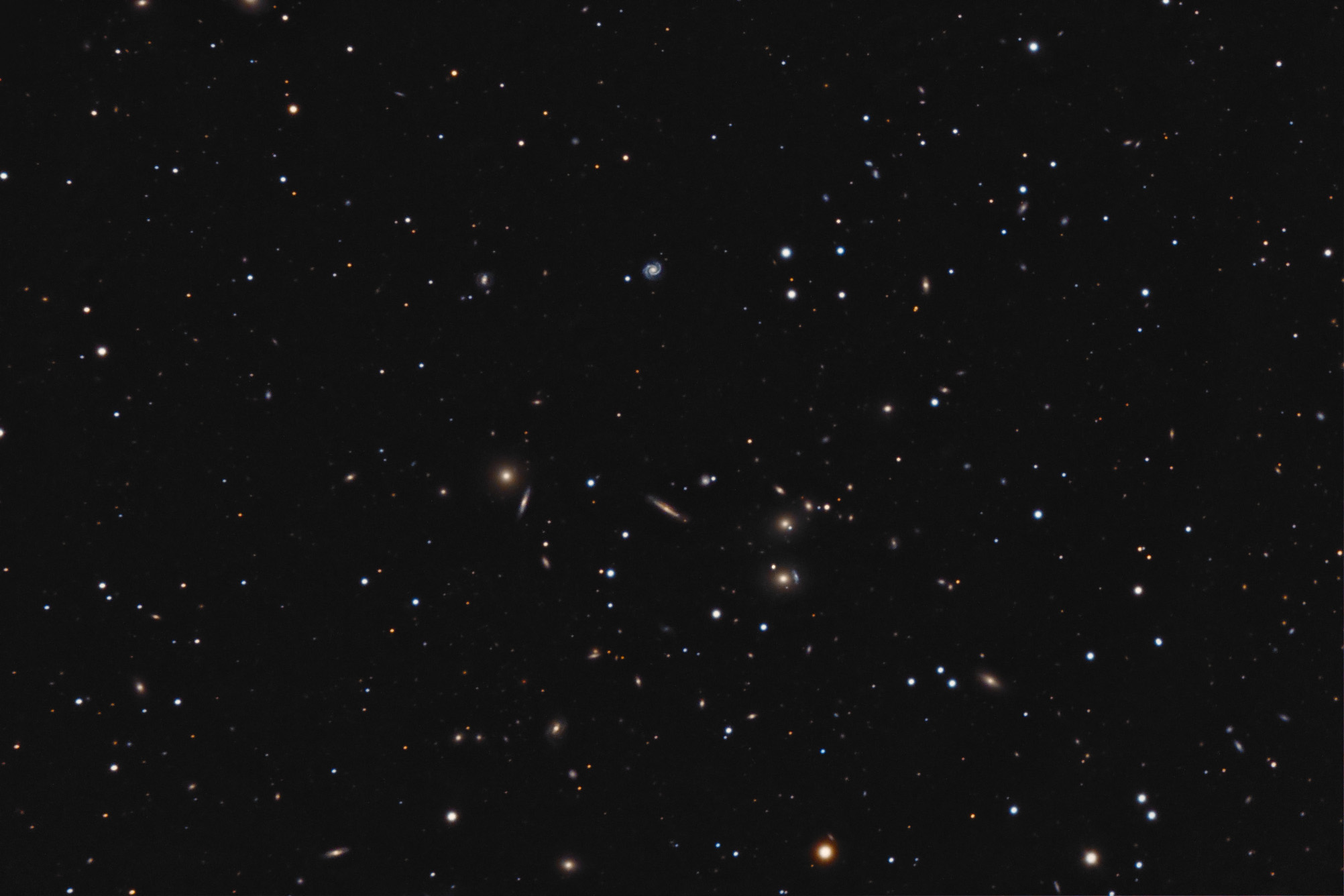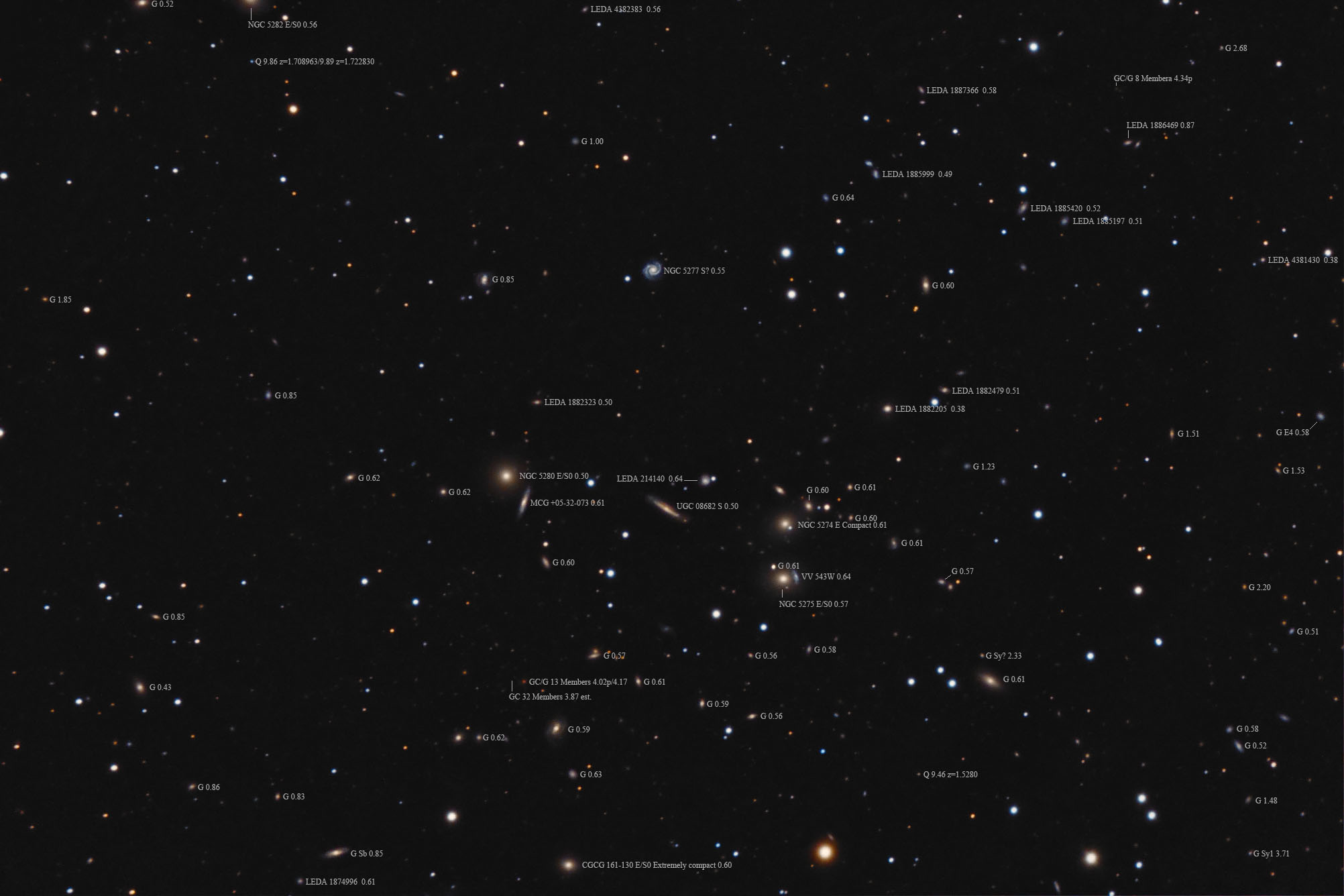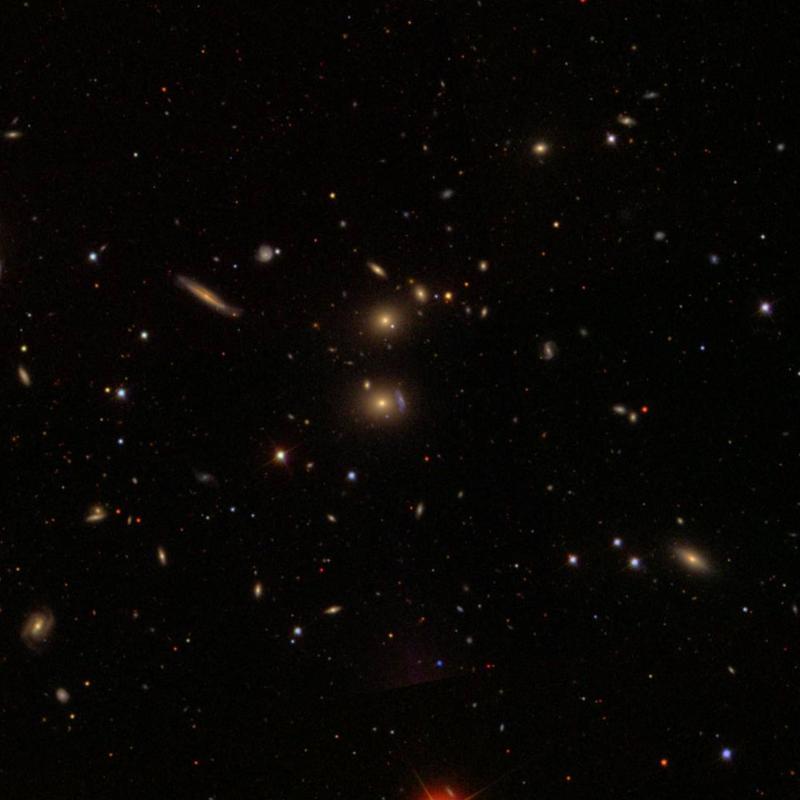| Description | Images |
Object name: NGC5280Designation(s): NGC5280, NGC5274, NGC5275, NGC5277, UGC08682, NGC 5275 and NGC 5280 are located in a rich galaxy field in Canes Venatici about 1.5 degrees north of the far more famous M3. While the 5 largest galaxies constitute the WBL 464 galaxy group I couldn't determine exactly what cluster the vast majority of these belong to. There appear to be three main groups, one about 500 million light-years, another at 600 million light-years and a third at 850 million light-years. There's lots of overlap here. The most distant group are likely members of the ABELL 7181 galaxy cluster listed at 830 million light-years. It is a very large but sparse cluster with a center about a minute beyond the left border about midline. Related Designation(s):2MASS J13422331+2950522, 2MASS J13422357+2949295, 2MASS J13423705+2951168, 2MASS J13423839+2957156, 2MASS J13425553+2952070, 2MASX J13422333+2950523, 2MASX J13422356+2949293, 2MASX J13423701+2951164, 2MASX J13423840+2957154, 2MASX J13425552+2952070, 2MASXi J1342383+295716, 2MASXi J1342555+295207, 2MFGC 11061, ASK 513637.0, ASK 526808.0, CAN 038 NED03, CAN 038 NED04, CAN 338 NED01, CGCG 1340.1+3005, CGCG 1340.1+3006, CGCG 1340.4+3013, CGCG 1340.6+3007, CGCG 161-124, CGCG 161-125, CGCG 161-129, CGCG 161-131, FIRST J134223.4+294929, GALEXASC J134223.21+295050.2 , GALEXASC J134236.79+295114.0 , GALEXASC J134255.57+295207.9 , GIN 311, GIN 314, GIN 315, HOLM 536A, IRAS F13403+3012, KUG 1340+302, MAPS-NGP O_324_0272773, MAPS-NGP O_324_0273045, MAPS-NGP O_324_0273394, MAPS-NGP O_324_0304271, MAPS-NGP O_324_0304281, MCG +05-32-066, MCG +05-32-067, MCG +05-32-070, MCG +05-32-072, NGC 5274, NGC 5275, NGC 5277, NGC 5280, NGC5274, NGC5275, NGC5277, NGC5280, NGP9 F324-0272773, NGP9 F324-0273045, NGP9 F324-0273064, NGP9 F324-0273394, NGP9 F324-0304281, NPM1G +30.0309, NSA 089593, NSA 092075, NSA 143788, NSA 143797, PGC 048536, PGC 048544, PGC 048563, PGC 048566, PGC 048580, SDSS J134223.31+295052.1, SDSS J134223.31+295052.2, SDSS J134223.32+295052.1, SDSS J134223.55+294929.5, SDSS J134237.03+295116.3, SDSS J134237.03+295116.4, SDSS J134238.38+295715.9, SDSS J134255.53+295206.9, SDSS-g-eon-0675, SDSS-i-eon-0704, SDSS-r-box-0175, SDSS-r-eon-0695, UGC 08682, UGC08682, USGC U558 NED04, USGC U558 NED05, USGC U558 NED07, USGC U558 NED08, UZC J134223.3+295051, UZC J134223.6+294929, UZC J134238.4+295716, UZC J134255.6+295207, VV 543, VV 543E, WBL 464-001, WBL 464-002, WBL 464-003, WBL 464-005, [CBW93] J12 B, [CBW93] J12 E, [CBW93] J12 F, [DZ2015] 725-01, [TTL2012] 119478, [TTL2012] 529626, | Permanent link: https://images.mantrapskies.com/catalog/NGC/NGC5280-NGC5274-NGC5275-NGC5277-UGC08682/NGC5280L6X10RGB2X10.JPG |


